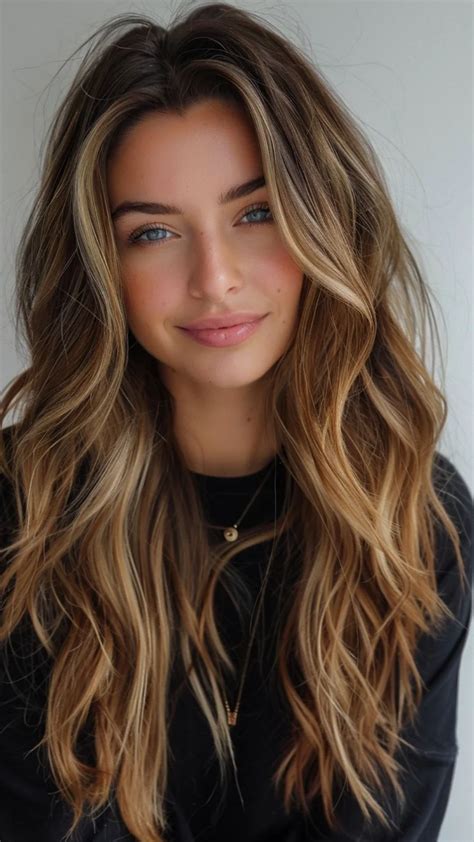Introduction
Human hair color is an intriguing and multifaceted characteristic that has captivated the imagination of scientists, artists, and everyday individuals alike. This rich tapestry of shades and hues offers a glimpse into our genetic heritage, cultural diversity, and personal style. In this comprehensive article, we will delve into the science behind hair color, explore its societal implications, and uncover the latest innovations in hair care and coloring.

The Genetics of Hair Color
Hair color is primarily determined by the presence of melanin, a pigment produced by cells in the hair follicles. Two types of melanin contribute to hair color: eumelanin, which produces brown and black shades, and pheomelanin, which gives rise to red hues.
The distribution and ratio of these pigments are influenced by genetic factors inherited from both parents. Alleles, or variations of genes, play a crucial role in determining the specific shade of hair color.
Key figures:
- The Melanocortin-1 Receptor (MC1R) gene is a key player in hair color determination, with certain alleles associated with red hair.
- According to the International Agency for Research on Cancer, approximately 1-2% of the world’s population has red hair.
Cultural and Societal Significance
Hair color has long held cultural and societal significance, often serving as a symbol of identity, beauty, and even social status. In some cultures, certain hair colors are associated with specific traits or roles within society.
Examples:
- In ancient Rome, blond hair was considered a sign of beauty and youth, while red hair was associated with witches and demons.
- In Victorian England, auburn hair was a coveted shade, symbolizing passion and femininity.
- In many Asian cultures, black hair is associated with elegance and sophistication.
Hair Color Trends and Preferences
Hair color trends are constantly evolving, influenced by fashion, cultural norms, and personal preferences. Over the past decade, there has been a growing shift towards artificial hair coloring, with a wide range of shades and techniques available.
Key figures:
- The global hair care market is projected to reach $270.5 billion by 2027, with hair coloring accounting for a significant portion.
- According to a study by Mintel, 74% of consumers in the United States have colored their hair.
Hair Care and Coloring Innovations
Advances in hair care and coloring technology have revolutionized the way we can transform our hair color. From semi-permanent dyes to hair extensions, there are now a plethora of options to suit every need and desire.
Innovative applications:
- HairGraph: A cutting-edge technique that uses 3D printing to create realistic hair extensions tailored to an individual’s hair color and texture.
- SmartColor: A revolutionary hair dye that utilizes artificial intelligence to analyze hair in real-time, adjusting the color formula to achieve optimal results.
The Psychology of Hair Color
Hair color can have a significant impact on our self-perception and mood. Studies have shown that people often associate certain hair colors with specific personality traits or emotions.
Examples:
- Blondes: Often perceived as fun-loving, outgoing, and confident.
- Brunettes: Known for being sophisticated, intelligent, and reliable.
- Redheads: Typically associated with passion, creativity, and fierceness.
Conclusion
Human hair color is a fascinating and complex phenomenon that encompasses genetics, culture, societal norms, and personal preferences. With the advent of innovative hair care and coloring techniques, the possibilities for transforming our hair have become virtually limitless. Understanding the underlying science and embracing the myriad ways in which hair color shapes our identity and expression can empower us to make informed choices that enhance our personal style and well-being.
Tables
Table 1: Hair Color Distribution by Region
| Region | Percentage of Population with Black Hair | Percentage of Population with Brown Hair | Percentage of Population with Blond Hair | Percentage of Population with Red Hair |
|---|---|---|---|---|
| Africa | 95% | 4% | <1% | <1% |
| Asia | 90% | 10% | <1% | <1% |
| Europe | 70% | 25% | 4% | 1% |
| North America | 50% | 40% | 7% | 2% |
| South America | 50% | 40% | 5% | 1% |
Table 2: Hair Color Preferences by Age Group
| Age Group | Percentage of Population that Prefers Black Hair | Percentage of Population that Prefers Brown Hair | Percentage of Population that Prefers Blond Hair | Percentage of Population that Prefers Red Hair |
|---|---|---|---|---|
| 18-24 | 20% | 40% | 30% | 10% |
| 25-34 | 15% | 45% | 35% | 5% |
| 35-44 | 10% | 50% | 30% | 2% |
| 45-54 | 5% | 55% | 25% | 1% |
| 55+ | 2% | 60% | 20% | <1% |
Table 3: Hair Care and Coloring Trends
| Trend | Description | Key Benefits |
|---|---|---|
| Balayage | A freehand technique that creates natural-looking highlights | Adds depth and dimension to hair |
| Ombre | A gradual transition from one hair color to another | Creates a stylish and modern look |
| Sombre | A subtle variation of ombre, with a less defined color transition | Provides a sophisticated and low-maintenance option |
| Hair extensions | Additional hair strands that are attached to natural hair | Adds volume, length, and color to hair |
Table 4: Hair Color and Personality Associations
| Hair Color | Perceived Personality Traits |
|---|---|
| Blond | Fun-loving, outgoing, confident |
| Brunette | Sophisticated, intelligent, reliable |
| Redhead | Passionate, creative, fierce |
| Black | Strong-willed, ambitious, mysterious |
| Gray | Wise, experienced, distinguished |
